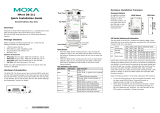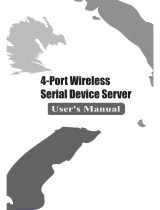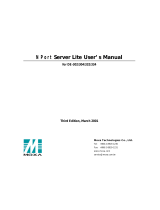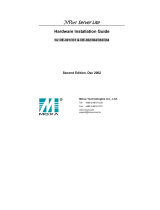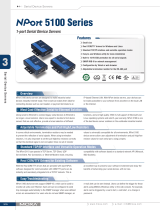
Redundant COM ............................................................................................................................... 6-12
DRDAS ............................................................................................................................................ 6-14
DRDAS Real COM ...................................................................................................................... 6-14
DRDAS TCP Server .................................................................................................................... 6-16
Terminal Applications ........................................................................................................................ 6-18
Terminal ASCII (TERM_ASC) ....................................................................................................... 6-18
Terminal BIN (TERM_BIN) .......................................................................................................... 6-19
Reverse Terminal .............................................................................................................................. 6-21
Dial In/Out Applications ..................................................................................................................... 6-22
PPP Mode ................................................................................................................................. 6-22
PPPD Mode ............................................................................................................................... 6-23
SLIP Mode ................................................................................................................................ 6-24
SLIPD Mode .............................................................................................................................. 6-25
Dynamic Mode .......................................................................................................................... 6-26
Disabled Mode .................................................................................................................................. 6-26
7. Additional Serial Port Settings .......................................................................................................... 7-1
Port Communication Parameters ........................................................................................................... 7-2
Serial Parameters ............................................................................................................................... 7-2
Port Data Buffering/Log ....................................................................................................................... 7-3
Port Modem Settings ........................................................................................................................... 7-3
Welcome Message .............................................................................................................................. 7-4
8. System Management Settings ........................................................................................................... 8-1
Misc. Network Settings ........................................................................................................................ 8-2
Accessible IP List ......................................................................................................................... 8-2
SNMP Agent Settings ................................................................................................................... 8-3
DDNS ........................................................................................................................................ 8-4
Host Table .................................................................................................................................. 8-4
User Table .................................................................................................................................. 8-5
Authentication Server .................................................................................................................. 8-5
System Log Settings .................................................................................................................... 8-6
Auto Warning Settings ......................................................................................................................... 8-6
Event Settings ............................................................................................................................ 8-6
Serial Event Settings ................................................................................................................... 8-7
E-mail Alert ................................................................................................................................ 8-8
SNMP Trap ................................................................................................................................. 8-9
Maintenance ...................................................................................................................................... 8-9
Console Setting ........................................................................................................................... 8-9
Ping ......................................................................................................................................... 8-10
Firmware Upgrade ..................................................................................................................... 8-10
Configurating Import/Export ....................................................................................................... 8-11
Load Factory Defaults ................................................................................................................ 8-12
Change Password ...................................................................................................................... 8-12
Certificate ........................................................................................................................................ 8-13
Ethernet SSL Certificate Import ................................................................................................... 8-13
Certificate/Key Delete ................................................................................................................ 8-13
System Monitoring ............................................................................................................................ 8-13
Serial to Network Connections .................................................................................................... 8-13
Serial Port Status ...................................................................................................................... 8-14
Serial Port Error Count ............................................................................................................... 8-14
Serial Port Settings .................................................................................................................... 8-14
Network Connections ................................................................................................................. 8-15
Network Statistics ..................................................................................................................... 8-15
Serial Data Log ......................................................................................................................... 8-16
System Log .............................................................................................................................. 8-17
Routing .................................................................................................................................... 8-17
Save Configuration ........................................................................................................................... 8-18
Restart ............................................................................................................................................ 8-18
Restart System ......................................................................................................................... 8-18
Restart Ports ............................................................................................................................ 8-19
9. Software Installation/Configuration ................................................................................................. 9-1
NPort Search Utility ............................................................................................................................. 9-2
Installing NPort Search Utility ....................................................................................................... 9-2
Configuring NPort Search Utility .................................................................................................... 9-4
Windows Driver Manager ..................................................................................................................... 9-5
Installing NPort Windows Driver Manager ....................................................................................... 9-5
Using NPort Windows Driver Manager ............................................................................................ 9-8
Windows Monitor Utility ..................................................................................................................... 9-15
Installing the NPort Monitor Utility ............................................................................................... 9-15
Using the NPort Monitor Utility .................................................................................................... 9-17
Linux Real TTY Drivers ...................................................................................................................... 9-19
Basic Procedures ....................................................................................................................... 9-19




















